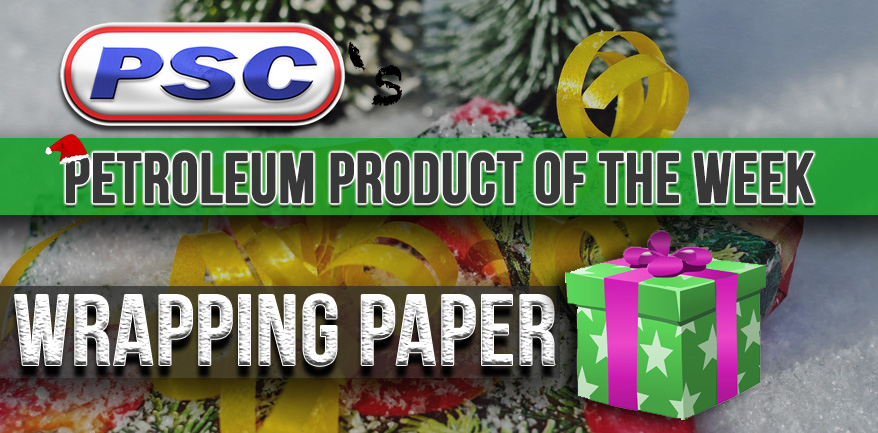Petroleum Product of the Week: Wrapping Paper
By on Dec 02 2020

Over 500 years ago, Gutenberg's printing press surfaced as one of the most groundbreaking inventions in human history. Books and subsequently, knowledge became more widely available, and reading was no longer an activity reserved for the rich.
Nowadays, printing has come a long way. We not only continue to print Bibles and novels and magazines, but we also print a great deal of other things that back in Gutenberg's day may have been considered excessive; i.e. food labels, advertisements, clothing tags, etc. etc. While many of these items aren't necessarily necessary, there is one paper product that particularly comes in handy (at least during the holidays) and that's wrapping paper.

Wrapping paper saves us from trying to come up with fanciful ways to present our gifts; but it what does best is contain the surprise. While it certainly may depend upon the type of container your gift is in, wrapping paper usually only takes a few minutes and is an essential aspect of holiday, gift-giving celebrations.
Americans spend about $2.6 billion on wrapping paper every year according to an estimate on theatlantic.com. The article's author, Megan Garber, also speculates that someday soon the world will altogether abandon wrapping paper, deeming it a costly, environmentally-disadvantageous triviality of life. While the massive amounts of refuse generated from a Christmas morning seems like a lot for most environmentalists, there are some green options out there (never forget the newspaper or the paper grocery bag). While wrapping paper seems like such an inconsequential purchase, it does a lot more than fill up garbage bags.
The best aspect of wrapping paper is its ability to conceal a surprise. And, as such, it seems appropriate that the manufacturing process of wrapping paper (in and of itself) is a bit surprising. Wrapping paper is printed on the same type of paper that is used for making magazines, but it is stretched on long sheets, rolled through huge industrial machines.
The petroleum comes in the form of inks. In fact, after an artist designs the paper, the printer must then do several runs " of the paper through the system to get the appropriate amounts of primary colors in the design. Lastly, the designs are finished with black to bring preciseness to the equation. The result? Shiny, artistic rolls of paper that make your amazon box look a lot more intriguing to the untrained eye.
It may not be saving any trees (but again, search for eco-friendly wrapping paper if you are really keen on concealing the surprise), but it is at least preserving a bit of that old-fashioned Christmas spirit.
SOURCES






